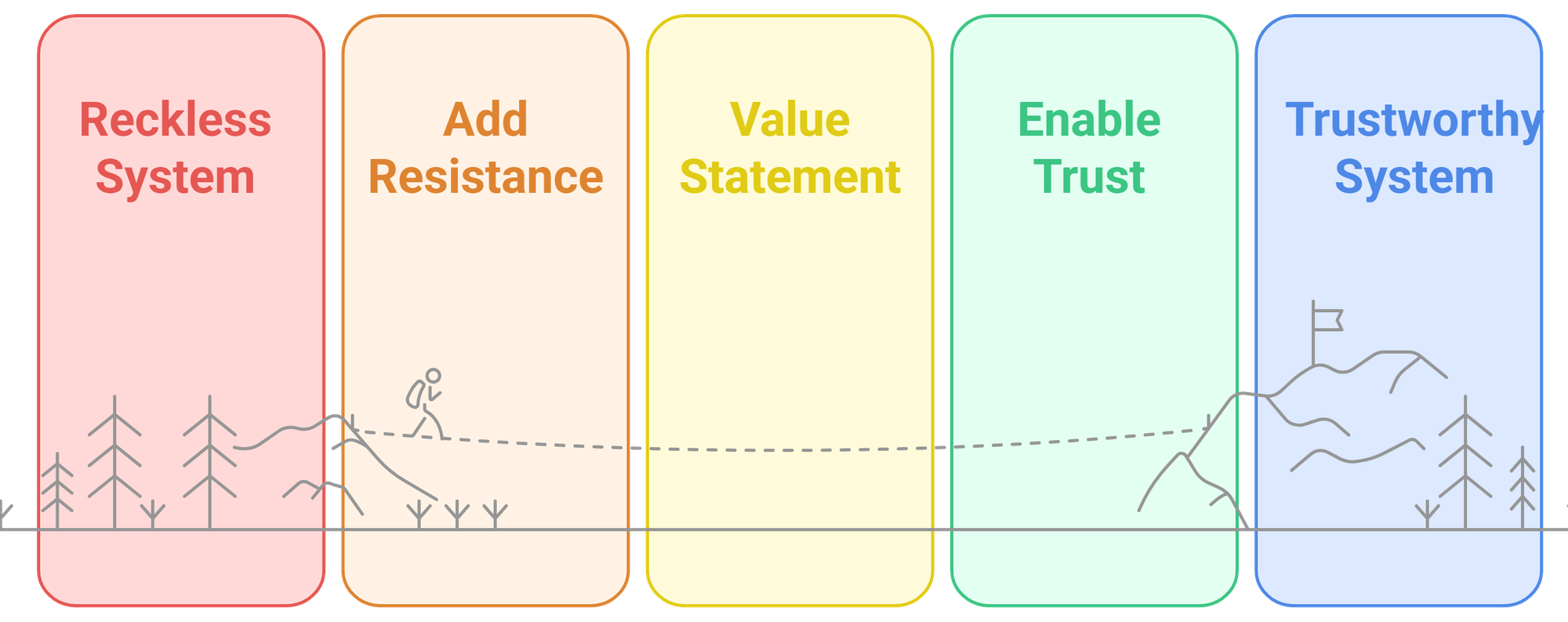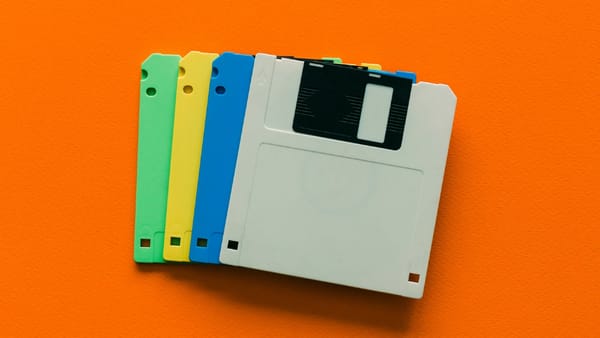The Friction Layer in System Design
Smooth systems fail where it matters. The right friction force pauses, makes consequences visible, and turns speed into trust. In critical design, slowing down is the real safeguard.

“Smoothness” is treated like the gold standard of design: remove every click, eliminate every pause, and make everything instant.
But in high-stakes systems, too much smoothness becomes dangerous.
Here’s the counterintuitive truth: the most trustworthy systems build friction on purpose.
When was the last time your system deliberately slowed someone down and was better for it?
The Smoothness Trap
In consumer apps, speed and convenience win. Swipe right, one-click purchase, instant approval. The faster, the better.
But finance, healthcare, and AI run on different stakes. Speed without reflection creates risks that compound.
Fraud, bias, and misdiagnoses often share one trait: the system made it too easy to act without thinking.
When critical decisions feel effortless, people stop treating them as critical.
This isn’t an accident. It’s a design choice that prioritises throughput over thoughtfulness.
Every removed step, every eliminated confirmation sends a message: speed matters more than consequences.
The result? Systems that feel smooth but break catastrophically when edge cases emerge.
What Is a Friction Layer?
A friction layer is a designed pause: a checkpoint that interrupts autopilot and forces reflection, confirmation, or secondary validation.
It’s not about slowing systems. It’s about making consequences visible.
- Frictionless design = speed, but higher systemic risk.
- Friction layer design = intentional resistance that builds trust, safety, and accountability.
This isn’t just technical. It’s philosophical: do you optimise for speed or for trust?
The best friction layers feel natural, not punitive. They create moments where users ask, “Is this really what I want to do?”
That pause, measured in seconds, can prevent damage measured in years.
Strategic Friction in Action
Finance: Two-factor approvals for large transfers don’t just prevent fraud; they signal that big money movements deserve big attention.
Daily limits act as “speed bumps” that protect customers and institutions from regretful impulses.
AI/ML: Deployment gates with rationale logs force teams to articulate reasoning before shipping code that affects thousands.
Audit trails don’t slow good work; they stop bad decisions from scaling.
Healthcare: Consent forms delay treatment, but they protect both patients and doctors. The pause creates space for questions, clarifications, and corrections.
It also transforms patients from passive subjects into active participants.
In every case, friction isn’t inefficiency. It’s trust by design.
Good Friction vs. Bad Friction
Not all friction helps. The difference lies in purpose and proportionality.
- Bad friction = pointless CAPTCHAs, empty compliance rituals, and slow bureaucracy.
- Good friction = clarifies decisions, makes accountability visible, and answers: “If this goes wrong, who owns the choice and why?”
Good friction is surgical. It shows up where the stakes justify the pause. Bad friction is everywhere, training users to ignore warnings.
System builders must decide: strip away friction for speed, or use it as a lever for reliability and trust.
The Accountability Signal
Friction signals beyond the immediate user. It tells regulators, stakeholders, and auditors that your system respects consequences.
- With friction: “We understand the weight of these decisions. We’ve designed safeguards.”
- Without it: “Speed matters more than safety. Efficiency trumps accountability.”
Both are messages. Both are choices.
Organisations that strip away all friction often discover they’ve also stripped away their ability to explain themselves when things go wrong.
The speed they celebrated becomes a liability in crisis.
The Application Challenge
Ask yourself: Where have you designed for smoothness at the expense of safety?
Every critical system should have at least one intentional friction layer, not as compliance theatre, but as a forcing function.
Simple examples:
- “Are you sure?” dialogues on irreversible actions.
- Waiting periods before major changes.
- Required explanations for overrides.
- Secondary approvals for high-impact choices.
These aren’t delays. They’re trust signals that show your system was built by people who understood the weight of its decisions.
The key is proportionality. Small decisions stay smooth. Big ones deserve resistance.
The Trust Dividend
Well-designed friction earns user confidence. People trust systems with safeguards more than ones that feel recklessly fast.
- Remove all friction → users grow uneasy.
- Add strategic friction → they relax, knowing edge cases were considered.
The paradox: systems with more friction often see higher engagement on critical features.
Users approach important decisions more confidently when they know the system won’t let them make catastrophic mistakes casually.
This isn’t just UX design. It’s trust architecture.
The Moral Choice

Friction design is a moral choice about the behaviour your system encourages.
Without resistance points, systems drift toward recklessness. Users develop false confidence.
Organisations lose awareness of the cumulative weight of thousands of micro-decisions.
Every removed confirmation dialogue, every eliminated approval step, and every streamlined pathway makes a statement about values.
The real question isn’t whether your system is fast enough.
The real question is whether it’s trustworthy enough for the consequences it creates.
In a world obsessed with removing friction, the systems that endure will be those that add it back strategically.
They’ll look slower in benchmarks but move faster where it matters: building the trust that enables bigger, riskier, more important decisions.
The right kind of friction doesn’t block progress; it makes sure progress is worth trusting.
This space stays independent. If it sparked value, you can fuel the next one ⇢
☕ Buy me a coffee



